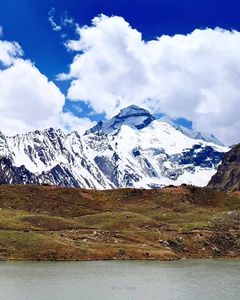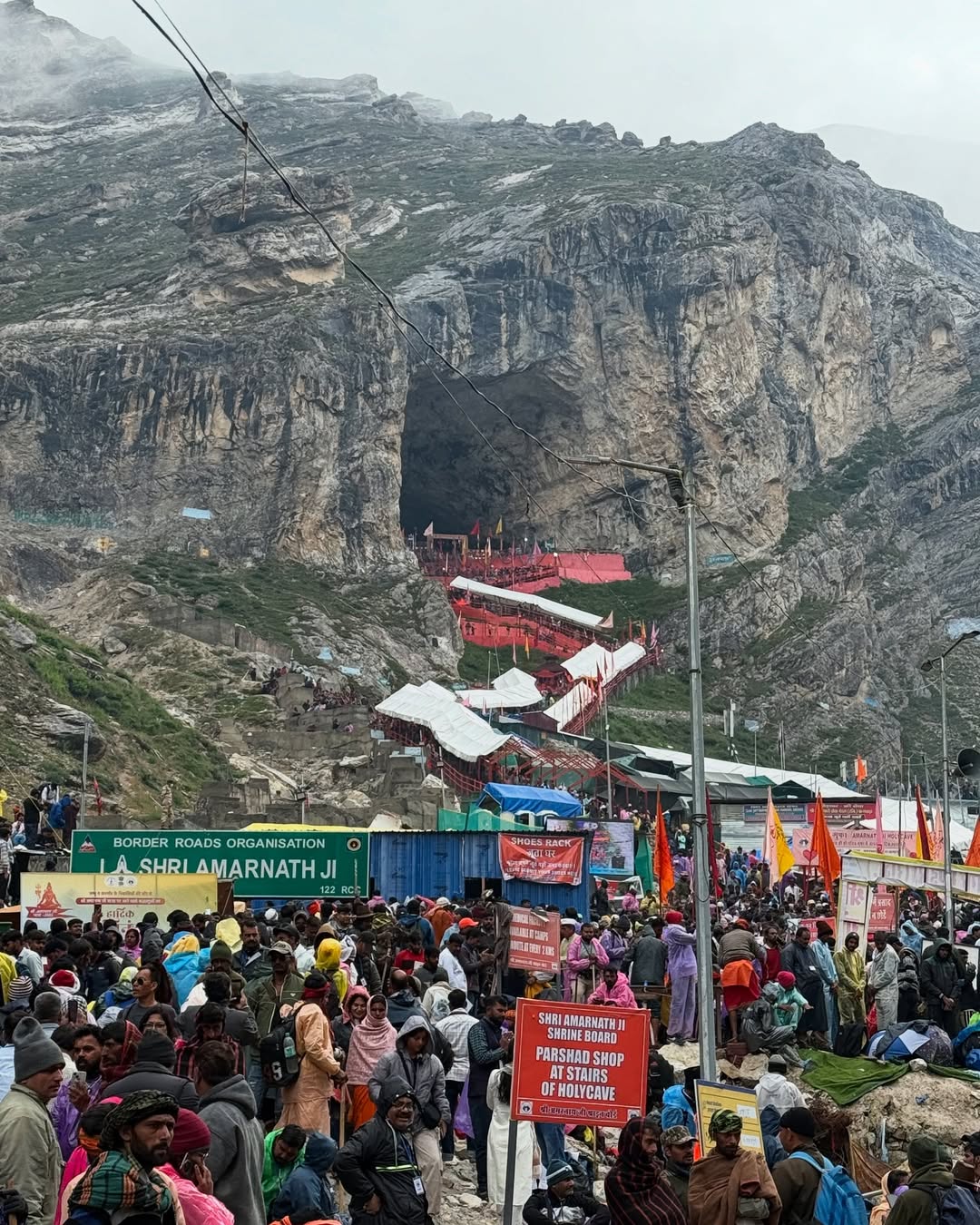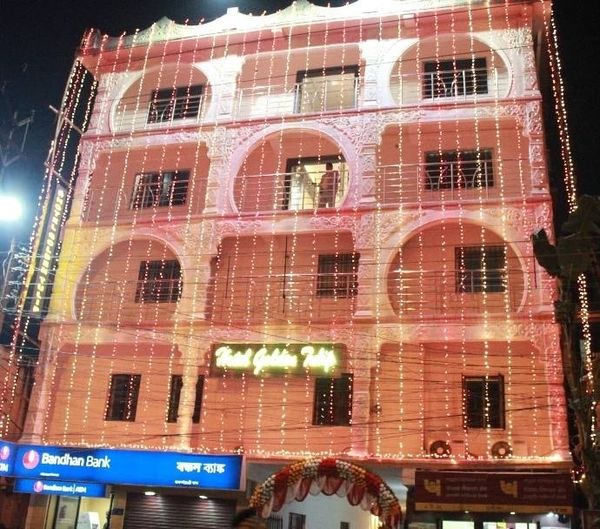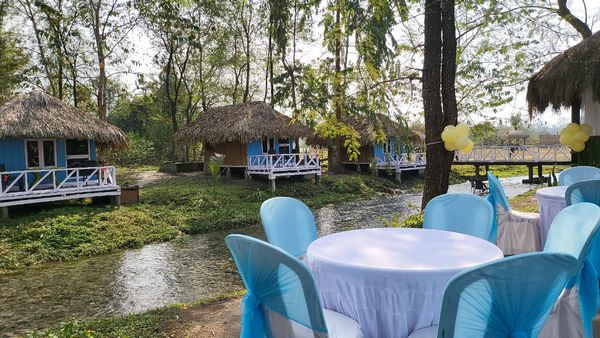Top 7 Sacred Himalayan Destinations for Devotees and Trekkers
 Ashish Rawat
12 Aug, 2025
10 mins read
90
Ashish Rawat
12 Aug, 2025
10 mins read
90

The Himalayas are more than just mountains they are the spiritual backbone of South Asia. For centuries, sages, monks, and pilgrims have journeyed into these remote peaks seeking enlightenment, divine blessings, and a closer connection to nature. Today, the region offers a rare combination of spiritual significance and trekking adventure, drawing devotees and adventurers alike. Whether you come to meditate in ancient monasteries, bathe in holy rivers, or conquer rugged trails, the Himalayas promise a journey of the soul as much as the body.
Here are seven sacred Himalayan destinations that blend spirituality and adventure in unforgettable ways.
1. Mount Kailash, Tibet
Altitude: 6,638 m (21,778 ft)
Significance: Sacred to Hindus, Buddhists, Jains, and Bon followers
Trek Duration: 3 days for the 52 km Kora circuit
Best Time to Visit: May to September
Mount Kailash is more than just a striking Himalayan peak it is a spiritual icon revered by multiple faiths for millennia. Rising dramatically above the barren Tibetan plateau, it is believed to be the earthly manifestation of Mount Meru, the cosmic axis and spiritual center of the universe in Hindu, Buddhist, and Jain cosmology. For Hindus, it is the eternal abode of Lord Shiva, where he resides with Goddess Parvati in a state of meditation. Buddhists revere it as the home of Demchok, representing ultimate bliss, while Jains believe it to be the site where their first Tirthankara attained liberation. The trek is both physically demanding and emotionally transformative, with pilgrims braving thin air, unpredictable weather, and rugged trails. Along the route, you pass sacred sites like Tarboche, adorned with colorful prayer flags, and the awe-inspiring Dolma La Pass, where many leave offerings as a sign of devotion. The stark beauty of the region emerald lakes, vast open skies, and the towering, snow-clad silhouette of Kailash creates a surreal atmosphere that leaves a deep imprint on all who make the journey.
2. Amarnath Cave, Jammu & Kashmir, India
Altitude: 3,888 m (12,756 ft)
Significance: Holy shrine dedicated to Lord Shiva
Trek Duration: 3–5 days from Pahalgam or Baltal
Best Time to Visit: July to August (during the Amarnath Yatra season)
Amarnath Cave, hidden deep in the Himalayas of Jammu & Kashmir, is one of the most sacred pilgrimage sites for Hindus. Inside the cave lies a naturally formed ice Shiva Lingam, which devotees believe changes in size with the phases of the moon. Each year, thousands embark on the challenging Amarnath Yatra, trekking through high-altitude passes, glaciers, and verdant meadows. The trek from Pahalgam is longer and scenic, while the Baltal route is shorter but steeper. Beyond its religious significance, the journey immerses you in pristine Himalayan landscapes, with gushing rivers, alpine forests, and snow-draped mountains adding to the sense of divine wonder.

3. Adi Kailash Yatra, Uttarakhand, India
Altitude: ~5,945 m (19,505 ft) for the peak
Significance: Known as “Chhota Kailash,†revered as a spiritual sibling of Mount Kailash
Trek Duration: 5–7 days from Dharchula, including Parvati Sarovar and Gauri Kund
Best Time to Visit: May to October
Adi Kailash, situated in the remote Kumaon region of Uttarakhand, offers a sacred experience reminiscent of Tibet’s Mount Kailash. This pilgrimage includes visits to Parvati Sarovar, whose waters are believed to hold divine blessings, and Gauri Kund, associated with Goddess Parvati. The trek from Dharchula passes through charming Himalayan villages, apple orchards, alpine meadows, and breathtaking views of snow-laden peaks. Pilgrims often combine the journey with the sacred Om Parvat visit, where snow patterns naturally form the shape of “Om†on the mountain face. The physical challenges of the route are rewarded with a profound sense of peace and a deeper connection to the divine.
4. Hemkund Sahib, Uttarakhand, India
Altitude: 4,633 m (15,200 ft)
Significance: Sikh pilgrimage site dedicated to Guru Gobind Singh
Trek Duration: 2–3 days from Govindghat
Best Time to Visit: June to October
Nestled amidst seven snow-capped peaks, Hemkund Sahib is one of the world’s highest gurdwaras and a deeply revered site for Sikhs. It is believed that Guru Gobind Singh, the tenth Sikh Guru, meditated here in a previous incarnation. The trek begins in Govindghat and winds through pine forests, waterfalls, and the colorful Valley of Flowers National Park, famous for its seasonal bloom of rare Himalayan flora. At the summit lies a crystal-clear glacial lake, its calm waters mirroring the surrounding peaks, creating a surreal setting for prayer and reflection.
5. Kedarnath, Uttarakhand, India
Altitude: 3,583 m (11,755 ft)
Significance: One of the twelve Jyotirlingas of Lord Shiva
Trek Duration: 1–2 days from Gaurikund
Best Time to Visit: May to June, September to October
Kedarnath Temple, set against the majestic Garhwal Himalayas, is one of the most iconic pilgrimage sites in India. Legend has it that the Pandavas from the Mahabharata sought Lord Shiva’s blessings here to absolve themselves of sin. The trek from Gaurikund follows a scenic path alongside the Mandakini River, with snow-dusted peaks framing the journey. The temple’s stone structure, standing resilient against the elements for centuries, radiates spiritual strength and devotion.
6. Tawang Monastery, Arunachal Pradesh, India
Altitude: 3,000 m (9,843 ft)
Significance: Largest Buddhist monastery in India, affiliated with Tibetan Buddhism
Trek Duration: Treks vary from 1–5 days in surrounding hills
Best Time to Visit: March to October
Perched on a hilltop in the Tawang Valley, Tawang Monastery is a center of Buddhist learning and spirituality. Established in the 17th century, it houses an 18-foot golden statue of the Buddha, vibrant murals, and ancient manuscripts. The serene atmosphere is enhanced by the chants of monks and the scent of incense drifting through its prayer halls. Treks in the surrounding region offer glimpses of alpine lakes, lush valleys, and traditional Monpa villages.
7. Phugtal Monastery, Ladakh, India
Altitude: 3,850 m (12,631 ft)
Significance: Remote Buddhist monastery built into a cliffside
Trek Duration: 2–4 days from Padum in Zanskar Valley
Best Time to Visit: June to September
Phugtal Monastery, clinging to a cliff like a beehive above the Tsarap River, is one of the most isolated monastic sites in the Himalayas. Believed to have been founded over 2,500 years ago, it has served as a place of meditation and learning for countless monks. The trek to Phugtal takes you through stark, high-altitude desert landscapes, remote villages, and crystal-clear rivers, offering complete immersion into the spiritual and natural beauty of Zanskar.
Conclusion
The sacred Himalayas invite travelers to journey beyond the ordinary into realms where physical challenge meets spiritual awakening. Whether it’s circumambulating Mount Kailash, trekking to the icy sanctum of Amarnath, or meditating in the stillness of Phugtal Monastery, each destination offers a unique blend of devotion and adventure. For those willing to step into these high-altitude sanctuaries, the reward is more than just breathtaking views it’s a journey that transforms the heart, mind, and spirit.
Written By:
Ashish Rawat



Hotels at your convenience
Now choose your stay according to your preference. From finding a place for your dream destination or a mere weekend getaway to business accommodations or brief stay, we have got you covered. Explore hotels as per your mood.


